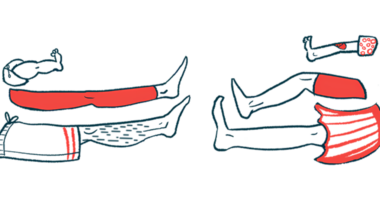Direct nose-to-brain delivery of dopamine is company’s goal
Gel given directly to nasal passages might be more effective, longer lasting

An Australian company announced that it is working on a direct, nose-to-brain way of delivering dopamine that might more effectively treat Parkinson’s disease.
PreveCeutical anticipates that this approach, based on what it calls a sol-gel solution that turns into a gel once in contact with mucosa tissue — the inner layer of the nasal cavity — will be safe and effective at getting dopamine or levodopa, a standard disease treatment, directly into a person’s brain.
The approach, using the company’s proprietary Nose to Brain Sol-Gel delivery platform, also is expected to be longer lasting and to have fewer of the side effects associated with systemic oral delivery. It has shown “significant promise” in laboratory tests, the company stated on its website.
Levodopa is a precursor molecule that cells use to make dopamine
PreveCeutical “aims to develop cost-effective, preventive and curative therapies for patients globally,” Stephen Van Deventer, its chairman and CEO, said in a company press release.
Parkinson’s is caused by the progressive dysfunction and death of dopaminergic neurons, the nerve cells that are responsible for producing the signaling molecule dopamine, which nerve cells use to communicate with each other and the rest of the body.
Levodopa, a precursor molecule that cells use to produce dopamine, is the mainstay treatment of Parkinson’s motor symptoms and works to increase dopamine levels. However, long-term use of levodopa (also called L-Dopa) is known to cause side effects that include dyskinesia, or involuntary movements, and is associated with off periods, or times between scheduled doses when Parkinson’s motor symptoms are not fully controlled.
According to the company, its Nose to Brain Sol-Gel delivery platform is designed to bypass the blood-brain barrier, a tight layer of cells that line the brain’s blood vessels to prevent harmful substances from accessing the brain. While advantageous, this barrier also can impede medications from entering the brain, and is seen as a major challenge in developing therapies for neurological diseases.
Potential for a longer-lasting Parkinson’s treatment with fewer side effects
Sol-gel is reported to be a suspension of small particles that exist in a liquid state at room temperature. When in contact with mucosa tissue, it rapidly forms a gel-like substance at body temperature. Nasal delivery allows medications to be absorbed into the bloodstream without passing through the gastrointestinal system. This might improve a medicine’s availability in the body — including over current nasal spray systems — potentially reducing the dose needed for therapeutic effects and the side effects associated with higher doses, PreveCeutical reported.
The gel system also stays in the nose passages, slowly releasing the medication potentially over days, it added.
The company is developing its delivery platform to include other treatments, like medicinal cannabinoids. It also is working on partnerships to further refine the platform.
“Once the program has successfully infused Dopamine and/or L-Dopa into the Sol-Gel platform, with [proof of concept] demonstrated in a preclinical model, we will explore partnerships with corporations and/or organizations who specialize in the field of Parkinson’s disease,” Van Deventer said.







